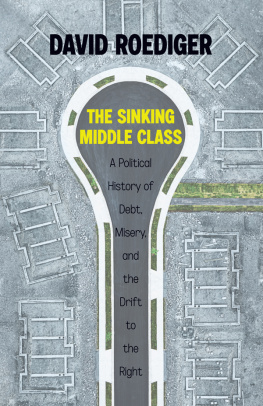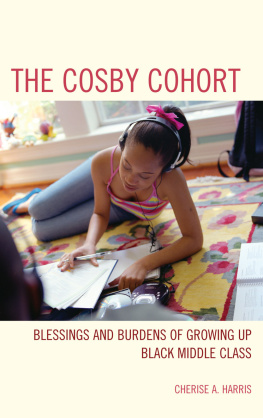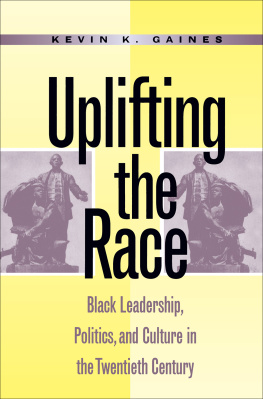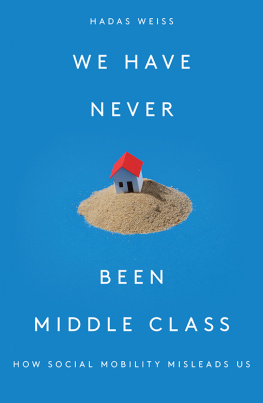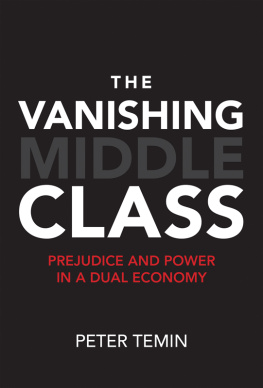VICTORIA L. HARRISON is an instructor in the Department of Historical Studies at Southern Illinois University Edwardsville. Her essays include We Are Here Assembled: Illinois Colored Conventions, 18531873, published in the fall-winter 2015 issue of the Journal of the Illinois State Historical Society, and Bastion or Bad Guy: Ngo Dinh Diem and the Press, 19571963, in the 2016 book The Vietnam War in Popular Culture: The Influence of Americas Most Controversial War on Everyday Life, volume 1, edited by Ron Milam.
Acknowledgments
MANY PEOPLE HAVE helped with this project, but my greatest debt is to Silvana Siddali. Her generous guidance, insightful criticism, and encouragement have been invaluable to me over these many years. She is a brilliant scholar and the best editor I have ever known. Silvana understood what I was trying to do before I did and lit the path for me. She is a dear friend to whom I will be forever grateful. Shirley Portwood, a friend and mentor for more than thirty years, trained me and shaped my approach to historical inquiry. Her critiques are always both sharp and warm. I was proud to be R. Bentley Andersons first graduate student. Mark Hull advised me even while at war. All improved this book immensely.
As I worked and reworked the book, I benefited from Silvanas writing circle at Saint Louis University. Christopher Schnell, Stephen Kissell, and Eric Sears made helpful comments on each chapter. They are supportive friends and colleagues who made taking criticism easier than it might have been. And then there are the pastries!
I am indebted to innumerable librarians and archivists in the several states covered by Barbours story, but I am particularly fond of Deirdre Johnson and Sara Miller, my interlibrary loan goddesses at Southern Illinois University Edwardsville. I would also like to thank my colleagues in the Department of Historical Studies who offered words of encouragement, especially Carole Frick, Bryan Jack, and Jessica Harris.
Thank you to Tom Dillard, Pen Bogert, Glenn Crothers, Dave Joens, and Elaine Evans. An earlier version of the first chapter was published in Ohio Valley History, and I am grateful to Lee Ann Whites and Craig Buthod of the Filson Historical Society for permission to republish that material. Some sections of chapters and Robert M. Brown Jr. This project was supported by the College of Arts and Sciences, the Graduate School, and the Department of Historical Studies at Southern Illinois University Edwardsville.
My friends and family have lived with Conway Barbour for as long as I have, and I am very thankful for their patience and support. Thank you to Terri Costley, Denise Harrison, Debra Homyer, and especially my best friend, soul sister, and role model, Jeanette Howell. I cherish my brothers, Mark and John Whitehead, and sorely miss our parents and youngest sibling, Bill. Above all, thank you to my husband, Dave, and son, Sam. I have found no photos of Conway Barbour, but Sam created one using images of James Barbour and Conways grandson, Thomas Conway Rankin. I am so proud of this talented young man. Both he and my husband of thirty-six years fill my life with laughter and my heart with joy. With great love, this book is for them.
Appendix: The Other Children
AS NOTED, CONWAY Barbour fathered sixteen children. The lives of four of those children are described in the conclusion. Below are some notes on the other twelve.
Mortality in the family was significant. Four of his children died as infants or as very small children. Lucien (born 1846) and Richard (born 1849) appear in the 1850 Louisville census with Cornelia but disappear thereafter. He also lost two infants by Frances in Alton. Mary (born 1863) died at six days; her brother William (born 1864) lived for about forty-eight hours. Two others died before reaching adulthood. Cornelias namesake (born 1852) died in 1860 in Cleveland after an unspecified accident. Conways namesake (born 1865 to Frances) drowned in a swimming accident in Alton when he was fifteen years old.
Two sons by Cornelia reached maturity. Joseph (born 1850), who served as a page to the Arkansas General Assembly when his father was a legislator, told the Freedmans Bureau in May 1871 that he was a teacher working for the public. He married Hattie Wilkerson of Madison County, Illinois, on 28 November 1878 and headed to Chicago, where he worked as a waiter, porter, calciminer, and laborer. They had no children. In the late 1880s, he briefly went to Los Angeles, apparently for health reasons. He died at his sisters home in Chicago of chronic interstitial nephritis 15 April 1889. Famous heart surgeon Dr. Daniel Hale Williams signed the death certificate; Reverend Jordan Chavis conducted the funeral. Joseph was forty years old.
Edward was born 12 February 1857 in Cleveland. In 1880 he was working as a bell tender (bellhop) at the Plankinton House in Milwaukee. Throughout the 1880s, he worked as a railroad porter in Chicago. He married Ida Hart, 12 July 1888, in Milwaukee and thereafter worked on the railroad from Jersey City, New Jersey. By 1896, however, he was back in Chicago and without Ida. He stayed until 1900 and then removed to Denver. There he married a woman named Belle; a daughter, Marguerite, was born 18October 1901. Edward continued to work on the railroad until about 1915 and then became a waiter at a restaurant.
According to his death certificate, Edward committed suicide on 11 July 1917 by stabbing himself with a knife in his left breast. He was sixty years old. The certificate itself contains several errors and omissions. Both of his parents names are misreported, as is the name of the informant, listed as Josephine M. Barbour. Edward had a sister named Josephine, but her last name in 1917 was Alsup. He is buried in Riverside Cemetery in Denver. Belle lived in their home on Williams Street in Denver until at least the early 1930s. Marguerite married twice. Her first marriage, to World War I veteran Clifford Alsopno known relation to Aunt Josies husbandended in divorce after only a year or so. Alsop died in Stockton, California, in September 1964. Her second husband, Leonard Sandridge, died a couple of months later in Seattle. Marguerite, who had no children, died in 1974.
Catherine (Kate), Conway and Cornelias oldest child, was born in 1845. In May 1870, she married a barber, John H. Diggs, in Chicago. A son, Gordon, was born in 1873. The 1880 census lists Kate as a dressmaker; her mother and a sister were part of the household. The Diggses enjoyed some standing in the community, even hosting the editor of the Western Appeal (St. Paul, Minnesota) at a luncheon in their home in April 1888. Kates health, however, was fragile. She died of tuberculosis (phthisis pulmonalis) 13 January 1890 after a lengthy battle. John Diggs was registered to vote in Chicago in 1892 but thereafter disappears. Gordon cannot be found after the 1880 census.
Two of Barbours daughters by Frances, Lillie and Minnie, married professional men and had public careers of their own. Lillian (Lillie) was born 10 January 1871 in Alton, just as her father was taking his seat in the Arkansas legislature. She taught briefly after graduating high school and then married Charles B. Jones, a schoolteacher and political operativeincluding service as mayorin Brooklyn, Illinois, Americas First Black Town. After Jones died in 1925, Lillie married Julius Marshall, an undertaker who had trained with the Officer family. The Marshalls operated an ambulance service and mortuary on Missouri Avenue in East St. Louis for many years. He died 7 June 1951. Lillie, who was childless, lived another six years. She was residing in the Mary Frances Nursing Home in Robertson, Missouri, when she died 22 September 1957 of senile cycosis. She was eighty-six.




